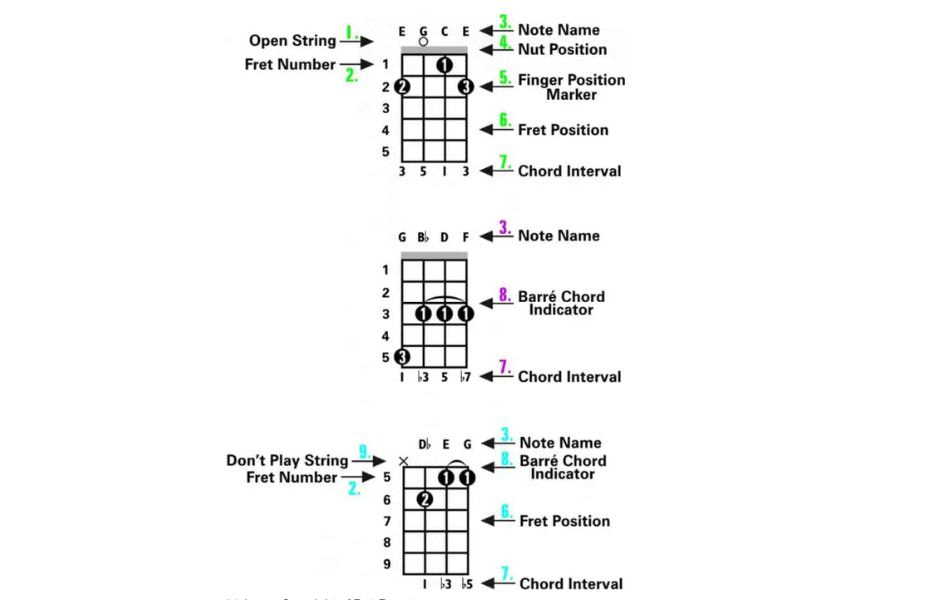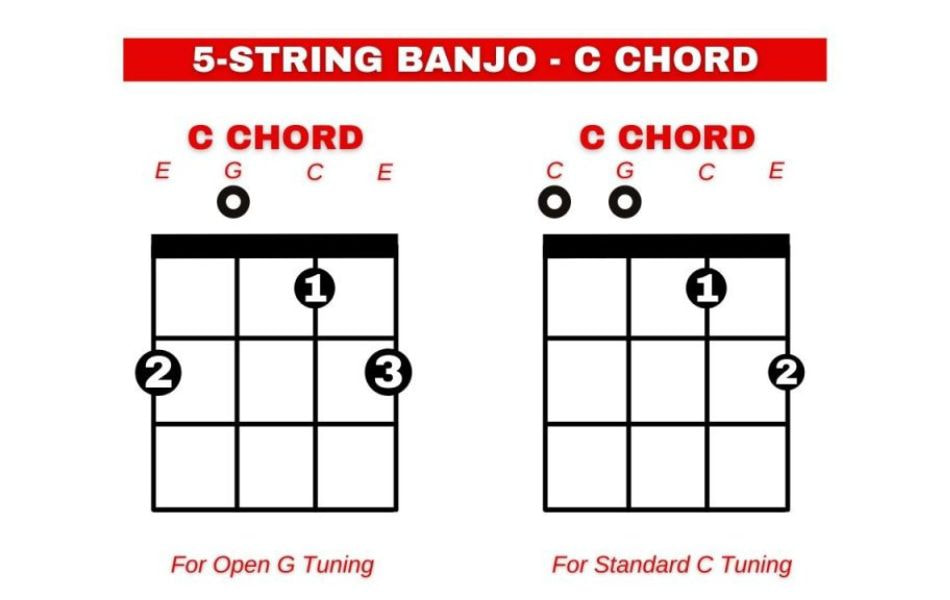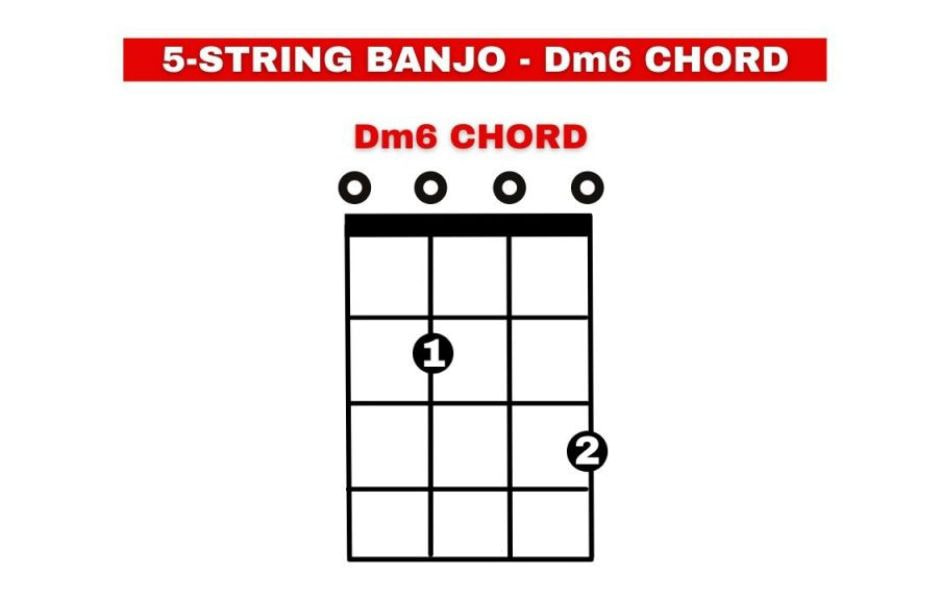Absolutely, the 5-string banjo is indeed a delightful instrument to listen to and can be quite enjoyable to play. While it might take time to master, there are several easy banjo chords 5-string that can serve as a great starting point for beginners.
Contents
How to understand banjo chords 5 string
Chords are the most realistic representation of how you place your hands to create a standard sound. However, it is used in symbolic form so not everyone can fully understand the symbol. This is detail explanation of banjo chords 5-string.
Positioning
Starting from the left side and progressing towards the right, the chord diagram displays the fourth through the first strings of the banjo. The fifth string is generally omitted from the diagram as it’s rarely fretted extensively.
The horizontal line at the top represents the nut of the banjo. This nut, similar to the zero fret, signifies the starting point for the open strings and acts as a guide between the fingerboard and the peghead.
The subsequent lines indicate frets: the second line denotes the first fret, the line below represents the second fret, followed by the third fret, and so forth.
The circular marks on the vertical lines representing the strings indicate the fret you should press down and which strings need to be fretted. In some variations of the diagram, the circle might also include a number indicating the suggested finger to use.
Symbol of fingers
At the lower end of the banjo chords 5-string, there are finger placement instructions. These directions can be presented using either letters or numbers. Using letters, “I” stands for the index finger, “M” for the middle finger, “P” or “L” for the pinky (little finger), and “R” represents the ring finger.
When using numbers in a banjo chord diagram, “1” corresponds to the pinky, “2” indicates the ring finger, “3” signifies the middle finger, and “4” represents the index finger.

Top 6 basic banjo chords 5 string
G major chord
The G chord, or G major, stands out as one of the simplest chords to play on the banjo. This is especially true if you’re using Open G tuning, where you won’t need to use your fingers to fret any strings. You can either pluck the strings individually or strum them together when playing this chord in Open G tuning.
However, even if you prefer the standard C tuning for your banjo, there’s no need to be concerned. Playing the G chord is still quite easy. In fact, you’ll only need to use a single finger to form the chord shape in standard C tuning.

C chord on Open G tuning
Playing the C chord on banjo chords 5-string introduces a bit more complexity compared to the G chord, but it’s definitely within reach. Forming the C chord requires the use of three fingers. Here’s the step-by-step process to play the C chord:
- Position your index finger on the fourth string (counting from the top) of the banjo.
- Place your middle finger on the first fret of the second string (the string just below the fourth string).
- Use your ring finger to press down on the first string at the second fret (the string right below the second string).

D7 Chord (open G tuning)
After you’ve gotten comfortable with the C chord, a good next step is learning the D7 chord, especially if you’re using Open G tuning. This is because the D7 chord involves moving your index and ring fingers, which builds on the finger flexibility you’ve developed while playing the C chord.
Here’s a written breakdown of the finger positions for the D7 chord:
- Index finger: First fret of the third string.
- Middle finger: Second fret of the first string.
- Ring finger: Second fret of the second string.

Dm6 Chord (open G tuning)
In Open G tuning, you’ll need to use your index finger and your middle finger:
- Index Finger: Place your index finger on the first fret of the third string (the string closest to you).
- Middle Finger: Position your middle finger on the second fret of the first string (the highest-pitched string on the banjo).

Em Chord in banjo chords 5-string
transitioning from the C chord to the E minor (Em) chord on a 5-string banjo is relatively straightforward. Here’s the process:
- Start with the C chord, where you have your index finger on the first fret of the second string.
- To switch to the E minor (Em) chord, simply lift your index finger off the first fret of the second string.
By doing this, you’ll have your second string played open, and the other fingers will remain in their positions from the C chord. This transition is smooth and requires minimal finger movement, making it an easier chord change to master. With consistent practice, you’ll be able to switch between these chords effortlessly.

E7 Chord
To play the E7 chord – one of the banjo chords 5-string, follow these steps:
- Index Finger: Place your index finger on the first fret of the G string. The G string is the fourth string from the top.
- Middle Finger: Position your middle finger on the second fret of the A string. The A string is the second string from the top.
Absolutely, learning banjo chords 5-string can indeed present challenges, particularly for beginners. However, it’s important to keep in mind that as you expand your chord repertoire, you’ll significantly increase the number of songs you can play on your banjo. This is a rewarding aspect of learning and mastering new chords.
